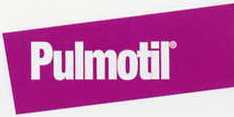NADIS Pig Disease Focus – May 2006
Colitis in Pigs
Colitis in growing pigs is often referred to as grower scours. Its incidence increased dramatically in the early 1980’s and there are suggestions that the incidence has further increased since the removal of some antibiotic growth promoters (AGP’s) in 1999. The complete ban on AGP’s which comes into effect in January 2006 is expected to result in a general further increase in loose faeces or outright scour in growing pigs. Maxus (Avilomycin) has effects against Lawsonia and Salinomycin has antispirocaetal effects ( see below).
What causes colitis?
Colitis, technically, means inflammation of the colon (or large intestine) leading to dysfunction and an increase in the water content of the faeces. It may only take an increase of 2% water in the faeces to change it from a solid stool to a runny scour.
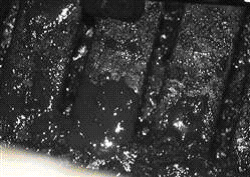
Typical product of colitis.
There are a number of specific causes of colitis and scouring in growing pigs:-
1) Infection with Brachyspira hyodysenteriae = Swine Dysentery
2) Infection with Brachyspira pilosicoli = Spirochaetal colitis
3) Infection with Salmonellae (especially Salmonella typhmurium)
4) Infection with Lawsonia intracellularis = Ileitis (This is technically not true colitis – although the colon may be affected along with the lower small intestine, but the clinical signs may be indistinguishable).
5) Infection with Trichuris suis – the whipworm
6) Nutritional and digestive problems
7) Epidemic diarrhoea and TGE infection
In addition, once primary gut damage has occurred with any of these processes further commensal organism can take advantage of the altered condition of the gut e.g. Balantidium coli.
The nutritionally induced scours – that generally are only diagnosed by a failure to detect a specific infectious cause may be the result of:-
1) Inbalance of cereals – high wheat inclusion
2) New crop cereals, especially barley
3) Excessive soya meal usage
4) Mannioc (topioca) inclusion
5) Rape meal use (especially above 5% of diet)
6) Excessive feed intake
In the case of the first 2 scenarios, the development of disease is believed to be associated with the presence of non-starch polysaccharides (e.g. xyloses and arabinoses) in the cereal. The molecules are not digestible by the pig unless chemically altered by heat (e.g. during pelleting). In the altered state, they act like a sponge in the small intestine only to shed the water under microbial attack in the colon, thus overloading the large intestine with water. The altered molecules act as a source of nutrients to the large intestinal flora, which will proliferate and exacerbate the gut dysfunction.
Non-starch polysaccharides are present in high levels in newly harvested barley (decaying over the first 4-6 weeks in store) and in certain varieties of wheat (at a stable level).
Clinical Signs
Typically, grower scours are recognised in pigs between 20 and 80kg, although the problem can be seen earlier and later in life.
The signs visible will depend on the causative factors, the degree of secondary invasion and the level of faecal recycling in the group and between groups.
The consistent sign is one of diarrhoea (scour) in a proportion of the animals which can contain blood and mucous, particularly seen with Swine Dysentery, Whipworm infection and occasionally with Spirochaetal colitis. Often the scour is just grey and watery.
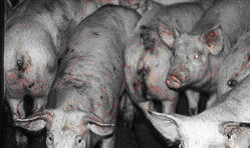
Mild colitis with perineal staining and loose faeces but no loss of condition.
Within a group, the consistency of the faeces will vary from solid stools, through “cowpats” to frank scour.
Severely affected individuals may show weight loss, hairy appearance, tucked in abdomen and general depression, although in many cases there is little clinical illness visible and the effects of the colitis may be only measurable by accurate routine batch or individual weighing of the pigs, demonstrating reduced growth rate.
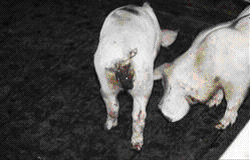
Severe colitis is young growers with obvious loss of body condition.
Diagnosis
Modern Polymerase Chain Reaction (PCR) tests are available to identify the different spirochaetes (Brachyspira sp) in faecal samples and Salmonella can easily be identified in faeces.
Ileitis and Trichuris are most reliably diagnosed at post mortem (both visually and by histopathology) – in growing pigs it can be difficult to identify worm eggs. PCR tests for Lawsonia in faeces are also available.
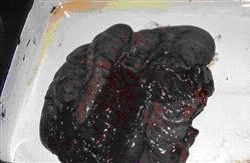
Haemorrhagic inflammation of the colon as a result of Swine Dysentery.
Viral causes of grower scours (TGE and PED) require specialist testing and blood testing to confirm.
In many cases, colitis of nutritional origin is diagnosed by elimination of the known pathogens listed.
Treatment
Clearly, treatment will depend on the specific cause of the diarrhoea:-
a) Swine Dysentery and Spirochaetal colitis response most reliably to Tiamulin, Valnemulin and Lincomycin.
b) Salmonellas would only be treated if causing significant illness and loss of production and then with antibiotics as indicated by sensitivity tests.
c) Ileitis responds rapidly to tylosin medication (along with tiamulin and lincomycin).
d) Trichuris suis is treated with in-feed wormers such as fenbendazole or flubendazole or by injection with one of the ivermectins.
e) Nutritionally induced colitis will respond to:-
i) a change of feed
ii) a reduction in fed levels
iii) a change from pellets to meal form
Control
As with any enteric (gut) disturbance, the key to long term control lies with hygiene measures. Regular washing of pens between batches including disinfection, lime washing or burning is essential. Avoidance of scrape through dunging areas is necessary, operating buildings on an all in all out basis.
Where a specific infectious cause is identified, strategic medication either continually or on a pulse basis may be necessary. Likewise, in an environment known to be contaminated with Trichuris eggs, strategic worming prior to clinical signs being seen is indicated.
With nutritional scouring, dietary manipulation, switching to use of meal feeding and inclusion of specific enzymes (polysaccharases) can be effective. Likewise, occasional antimicrobial medication can be useful to suppress secondary opportunist organisms on an empirical basis as advised/prescribed by the attendant veterinary surgeon.
Copyright © NADIS 2006 www.nadis.org.uk
While every effort is made to ensure that the content of this forecast is accurate at the time of publication, NADIS cannot accept responsibility for errors or omissions.
All information is general and will need to be adapted in the light of individual farm circumstances in consultation with your veterinary surgeon
| FURTHER INFORMATION | SPONSORS’ LINK |
| • Supporting British Livestock click here |
|
| FURTHER INFORMATION | SPONSORS’ LINK |
| • Supporting the british pig industry |
|
| FURTHER INFORMATION | SPONSORS’ LINK |
• To find out more |
|
| FURTHER INFORMATION | SPONSORS’ LINK |
• To find out more about |
|




